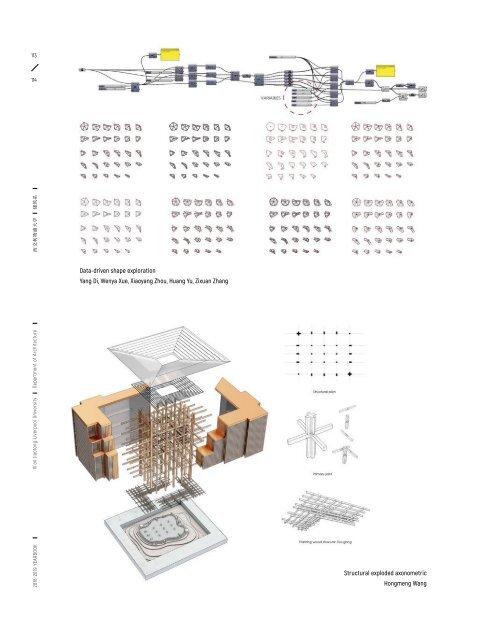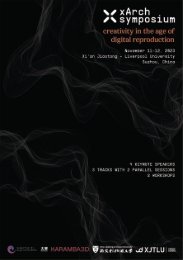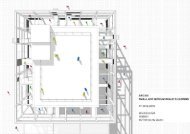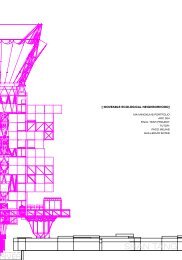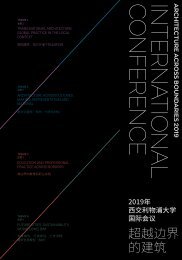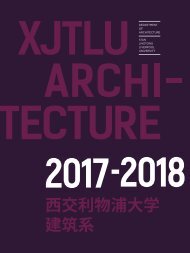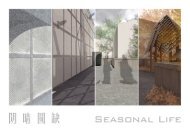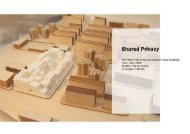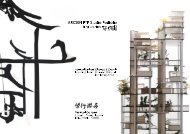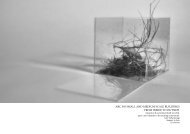YEARBOOK 2018 - 2019 | XJTLU DEPARTMENT OF ARCHITECTURE
The sixth edition of the yearbook of the Department of Architecture at Xi'an Jiaotong-Liverpool University presents student works created during the academic year 2018 - 2019. The yearbook exemplifies the new model for Chinese architectural education for which the department was commended by the Royal Institute of British Architects (RIBA). It is also a showcase of the creative culture that has guided our students towards successful international careers as responsible and creative architectural designers. The Department of Architecture at XJTLU offers RIBA Part 1, 2 and 3.
The sixth edition of the yearbook of the Department of Architecture at Xi'an Jiaotong-Liverpool University presents student works created during the academic year 2018 - 2019. The yearbook exemplifies the new model for Chinese architectural education for which the department was commended by the Royal Institute of British Architects (RIBA). It is also a showcase of the creative culture that has guided our students towards successful international careers as responsible and creative architectural designers. The Department of Architecture at XJTLU offers RIBA Part 1, 2 and 3.
Create successful ePaper yourself
Turn your PDF publications into a flip-book with our unique Google optimized e-Paper software.
113<br />
114<br />
ARC301<br />
Architectural Technology<br />
<strong>2018</strong>-<strong>2019</strong> <strong>YEARBOOK</strong> Xi’an Jiaotong-Liverpool University Department of Architecture 西 交 利 物 浦 大 学 建 筑 系<br />
Data-driven shape exploration<br />
Yang Di, Wenya Xue, Xiaoyang Zhou, Huang Yu, Zixuan Zhang<br />
Structural exploded axonometric<br />
Hongmeng Wang<br />
Level 3<br />
( Year 4 | Semester 1 )<br />
Module Credits<br />
5<br />
Module Leader<br />
Davide Lombardi<br />
Teaching Team<br />
David Vardy<br />
Zayad Motlib<br />
Number of Students<br />
75<br />
History demonstrates that every advance in architectural design is<br />
strictly related to advances in the field of technology. From Egyptian<br />
to contemporary architecture the main goal has always been the one<br />
of increasing the building’ performance, be it an aesthetic, energetic or<br />
structural one, through the combination of new materials and shapes,<br />
which consequently push the boundaries of Architecture.<br />
Performance has been determined and evaluated during the last<br />
centuries using analogue models to simulate forms as well as physical<br />
behaviours, and through drawings, to prefigure the outcome of the whole<br />
building, and likewise the small parts of it.<br />
Since digital tools have been introduced to the discipline of Architecture,<br />
the focus has progressively shifted from manual or digital drawing to<br />
digital simulation. New theoretical approaches have established a logic<br />
and have been introduced in the design stage changing the classical<br />
design paradigm, based on the addition of elements, in favour of a new<br />
strategy premised upon the inter-articulation of different components.<br />
This workflow, called computational design, enables designers to<br />
increase the level of complexity of their research implementing the<br />
idea of technological performance and retrieving new data to improve<br />
their proposals. Within this frame, architectural technology and<br />
computational design are joined to explore new solutions and processes<br />
through a holistic approach. The aim of the module is to provide an<br />
overview of the potential of technology and computational strategies as<br />
means to transform dreams in consistent proposals.<br />
Level 03 – Year 4<br />
B Eng Architecture Programme


